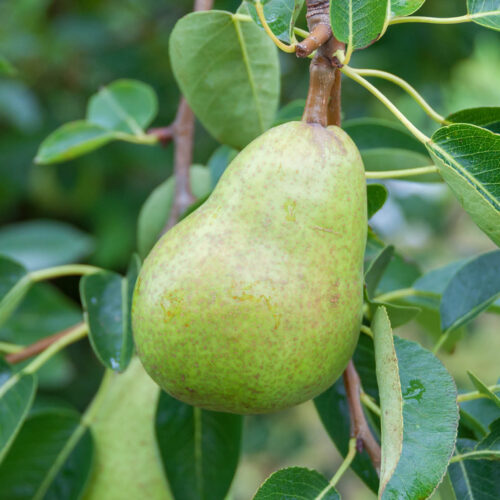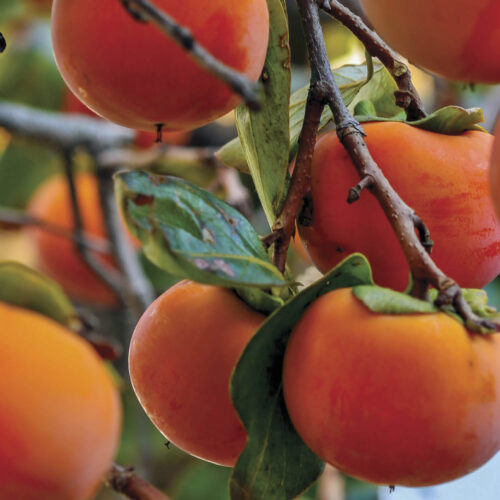Make mine mango
2013-12-10T04:49:20+11:00
Choosing the right variety and practising regular pruning will ensure marvellous home-grown mangoes, writes Phil Dudman.
Mangoes are the king of fruits and they grow on giant-sized trees, but don’t let that stop you planting one. With regular pruning, you can keep a mango tree compact, healthy and productive. Growing your own ensures chemical- free eating, and you can enjoy many different varieties too, which will extend your harvest season. You can have fruit as early as three years after planting, which is pretty fast in the fruit tree world.
Mangoes grow best in frost-free tropical and subtropical areas, but some varieties will produce reasonable crops in warm, frost-free temperate areas. They like cool, dry conditions from late winter to early summer during flowering and early fruit development, which is the normal weather pattern in tropical areas where mango production is highest. Winter and spring rainfall?in coastal subtropical regions encourages diseases that cause flower and fruit drop. This is why gardeners in these areas will have a good crop one year and nothing the next.
Site selection
Mangoes grow in a wide range of soils, even those low in fertility, as long as they drain freely. Find a warm spot for planting – a northerly aspect is best – with protection from strong winds that can damage branches, flowers and fruit. Gentle breezes are fine, and the airflow helps to minimise disease problems.
So how much room do they need? If you let it go, a mango tree will grow into a 10m giant, but with annual pruning and choosing grafted dwarf varieties, you can keep trees around 2-3m tall and wide. This also makes maintenance and harvesting much easier. If you are planting multiple trees, allow a space of around 4-5m.
Planting
You can plant mango trees year-round, but the best time for most areas is
autumn when conditions are warm and mild. Remove the grass and dig over an area of around 1m2, incorporating a barrow load of well-aged compost. Mound the soil to improve drainage and plant your tree to the same depth as it was in the container.
Water the tree thoroughly after planting and cover the bare soil with straw mulch to retain moisture and reduce weed competition. Water trees twice a week for the first month and then gradually increase the depth and time between waterings to encourage deep roots.
Give the tree a light application of organic fertiliser after the first month, then repeat applications once every two months from spring to autumn for the first three years to aid establishment. A grafted tree will start producing fruit three years after planting.
Feeding and pruning
Most mango trees survive on natural rainfall once established, however it pays to give them a regular deep soaking during extended dry periods, particularly when fruit is setting. They don’t need much feeding, just a light application of organic fertiliser immediately after harvest. As the tree grows, increase the diameter of the grass-free mulched area to at least 2m.
Pruning and training should start early. In spring or summer, cut the top off young trees, 1m above the ground to stimulate multiple branching. Retain four to five main limbs and encourage them to form a low spreading vase-shaped framework.
For the following three years, continue to prune the tips of the main branches each summer to promote multiple shoots. Remove any vigorous upward growth to keep the canopy low and compact.
Once established, continue to prune every summer, immediately after harvest. Remove vigorous upward growth and thin out excessive internal growth to maintain good airflow throughout the canopy. Old flowering stems and other dead and diseased material should be removed. Shorten longer branches where necessary to maintain a compact shape.
Mangoes flower and fruit on the outer canopy, so trim the remaining end growths lightly to encourage lots of shoots and potential flowering sites.
Oversized trees and branches should be cut back hard in late winter. The resulting regrowth can be thinned and trained to form new low spreading branches as described above for a young tree.
Pests and diseases
Non-organic commercial mango crops are repeatedly sprayed with insecticides and fungicides during growth as well as post-harvest. This is unwarranted in backyard growing where common pests and diseases can be managed without harmful chemicals.nd on the undersides of leaves.
Anthracnose and bacterial black spot are common mango diseases, which are most prevalent during wet weather. Anthracnose shows up as small leaf spots that gradually enlarge. Flowers and young fruit can blacken and fall. Black patches appear on older fruit, causing them to rot as they ripen.
Bacterial black spot is the black angular lesion you see between the veins on leaves. It can cause flower and stem dieback and star-shaped cracks in the fruit. The key to controlling these diseases is good plant hygiene.
Disease organisms live in dead material on the plant and then spread by water splash, so remove and bury or burn dead stems, flowers and other infected material regularly. Pruning to maintain good airflow through the canopy will also minimise disease.
Some gardeners spray trees with copper hydroxide (organically approved) just prior to flowering and once a month during fruit set. Some varieties offer a degree of disease resistance (see chart on page 33).
Scale insects are often found on the undersides of leaves, causing yellow blotches on the upper surface. Control small outbreaks by spraying the underside of leaves with white oil or soap sprays (see organicgardener.com. au for recipes), or trim off affected growth to control large outbreaks.
Fruit fly is a problem in some areas. Exclusion bags made of cloth, paper or mesh can be used to cover and shield individual fruit. To protect entire trees, set up a frame over the canopy and cover with a sheet of fruit-fly fabric.
Netting will also protect fruit from possums and flying foxes, however it’s important that nets be installed correctly to ensure the welfare of wild animals. (See ehp.qld.gov.au/wildlife/ livingwith/flyingfoxes/netting_fruit_ trees for more on this.) Another way to reduce bat and possum damage is to pick the fruit earlier.
Harvesting and storage
Mangoes bear harvestable fruit from October (in northern tropical areas such as Darwin) to March (in southern areas). The first sign of fruit maturity is a change of colour from green to yellow, orange or red (depending on the variety). At this stage, cut open a fruit and inspect the colour of the flesh near the seed. If it is yellow, they are ready for picking.
Always clip the fruit from the tree, leaving a short stem. The milky latex, which is released when picked, can irritate skin so cover up. It can also burn the fruit skin and should be washed off straight away.
Picked fruit will ripen at room temperature within a week. Unripened fruit can be stored in the fridge for short periods then brought out to ripen when needed. Ripened fruit will keep in the fridge for a few days. Excess fruit can be scooped out and frozen, or dried in a dehydrator. You can also eat green mangoes fresh and cooked or use them in chutneys.
Mangoes need to be protected from bats, possums and birds.
GROWING FROM SEED
Planting the seed of a ‘Bowen’ or ‘Kensington Pride’ mango produces a tree with the same growth habit and fruiting characteristics. The same goes for the popular ‘R2E2’ variety. Remove the flesh, cut a small section from the pointy end and plant into potting mix.
Keep it moist and it will shoot within a month or two. ‘Bowen’ and ‘R2E2’ seeds are polyembryonic, which means they contain multiple embryos. These can be separated and repotted once they shoot. Seedling trees can take five to eight years to fruit. If you can’t wait that long, try grafting a stem from your favourite local mango tree onto your seedling.






